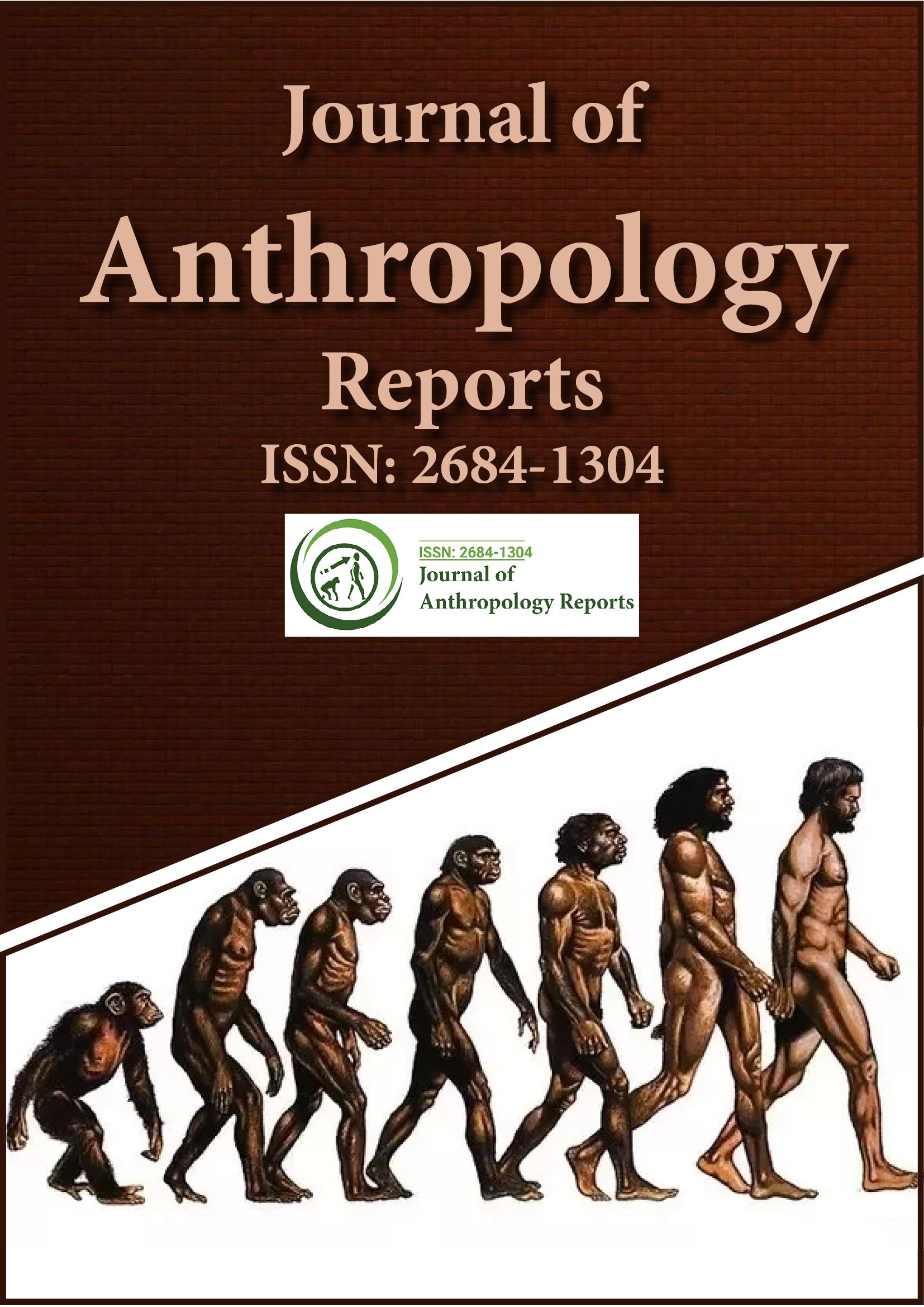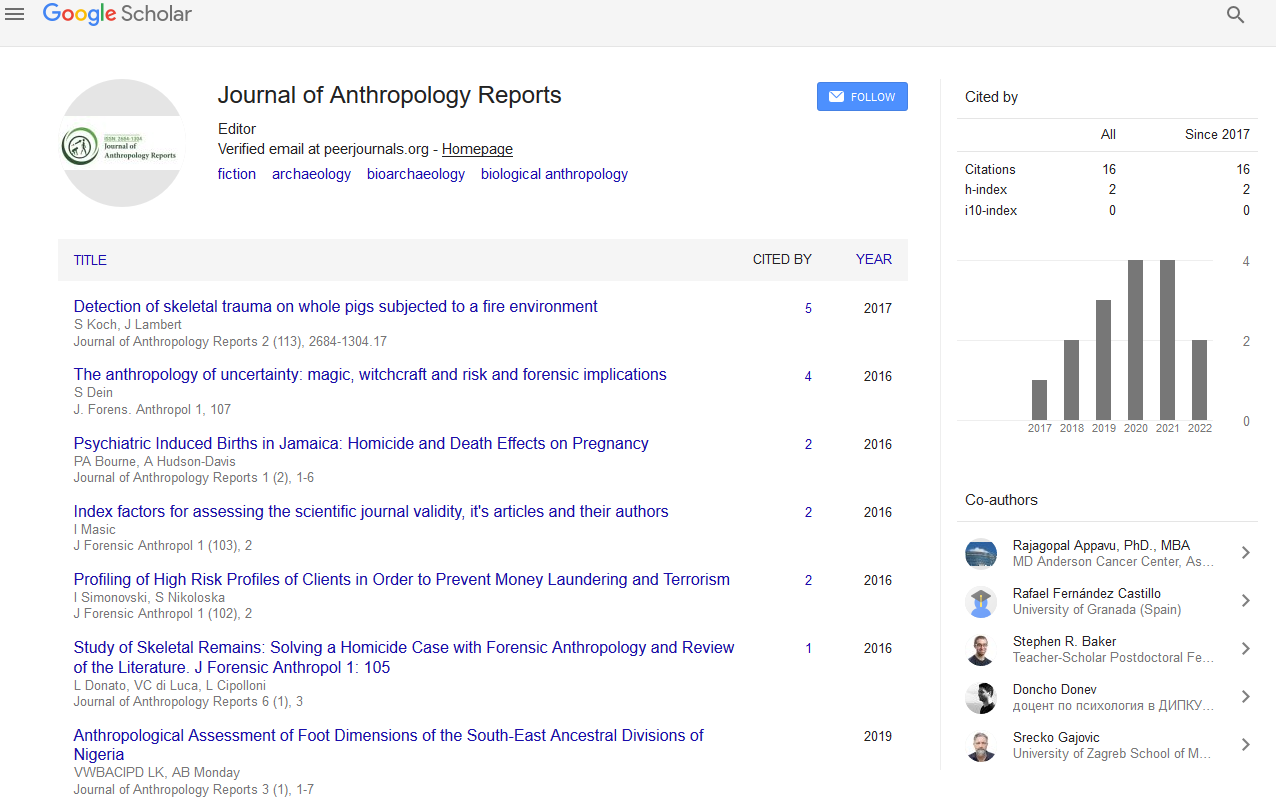Indexed In
- RefSeek
- Hamdard University
- EBSCO A-Z
Useful Links
Share This Page
Journal Flyer

Open Access Journals
- Agri and Aquaculture
- Biochemistry
- Bioinformatics & Systems Biology
- Business & Management
- Chemistry
- Clinical Sciences
- Engineering
- Food & Nutrition
- General Science
- Genetics & Molecular Biology
- Immunology & Microbiology
- Medical Sciences
- Neuroscience & Psychology
- Nursing & Health Care
- Pharmaceutical Sciences
Short Communication - (2023) Volume 6, Issue 2
Application of Ethoscience in Medical Anthropology
Maria Istiqomah*Received: 20-Jun-2023, Manuscript No. JFA-23-21904; Editor assigned: 22-Jun-2023, Pre QC No. JFA-23-21904 (PQ); Reviewed: 06-Jul-2023, QC No. JFA-23-21904 (QC); Revised: 13-Jul-2023, Manuscript No. JFA-23-21904 (R); Published: 21-Jul-2023, DOI: 10.35248/2684-1304.23.6.165
Description
The study of native people's knowledge of the world around them, including biology, zoology, and astronomy, is known as ethnoscience. The cultural knowledge and classification systems of a given society are the focus of this field. Ethnography, from this system, would incorporate every one of the standards and thoughts that an individual from a general public would require to work inside its own way of life. Ethnoscience emerged in the middle of the 1950s in response to conventional ethnographic research, which was regarded as being skewed toward Western conceptual classifications. "Reproduce a cultural reality as it was perceived and lived by members of a society" was the objective of ethnoscientists. In 1956, Floyd Lounsbury and Ward Good enough distributed data in regards to the semantic examination of connection terms. It contrasted the Native American Pawnee framework and the Truk of the Pacific.
Analyzing the organization of classificatory terms and identifying ideal units were the topics of these papers. Although designed specifically for the analysis of kinship terms, the general principles can be applied to other fields. Berlin, Breedlove, and Raven used this method to change how people organized their knowledge of animals and plants in the 1970s. Their theory emphasized the necessity of reducing the number of distinguishing characteristics between species. One method remembered to be utilized by witnesses was quality decrease, which essentially restricts the quantity of criteria traits. The adaptation of ethno science’s methods, which Harold Conklin first used in 1954 with his history work among the Hanunoo, was one aspect of the emerging field. He discovered that there were more than 1,800 distinct plant terms in the people's plant-specific vocabulary. His research focused on how people organized this data [1].
In a more narrow sense, the term "ethnoscience" refers to a perspective on cultural knowledge that emerged in the 1950s as part of the newly emerging field of cognitive anthropology. This perspective argued that "culture" consisted of mental or cognitive phenomena that required rigorous approaches and analytical tools, like those being developed in linguistics and cognitive psychology [2]. In point of fact, one of the advantages of an ethnoscience approach to medical anthropology is that it takes seriously the beliefs and practices of members of a culture, regardless of whether those beliefs and practices have any connection to a scientific understanding of disease. This is one of the benefits of an ethnoscience approach [3,4].
A wide range of anthropological approaches to the study of disease and illness make up the complex field of medical anthropology. The study of medical care in settings ranging from traditional folk healing to high-tech hospitals as social systems, as well as the nature of beliefs about illness in traditional healing systems, are just a few of the many topics and issues covered by medical anthropology. Other anthropology topics are include the impact of society and culture on human evolution and genetic history and vice versa. Since this chapter is about ethnoscience and medical anthropology, it will focus on the subfield of medical anthropology known as "ethnomedicine" that considers disease and illness to be cultural knowledge systems [5-10].
Conclusion
The conclusion, numerous clinical anthropologists allude to the Global Factual Grouping of Infections and Wellbeing Related Issues created by the World Wellbeing Association. This etic catalogue or nosology list of diseases can be compared to or contrasted with the following conditions: the diseases that each culture acknowledges or believes in. Each culture has its own emic catalogue or nosology of diseases, and it may even have a set of diseases that laypeople are familiar with and a set of diseases that folk practitioners are familiar diseases.
References
- D’Andridge RG. The development of cognitive anthropology. Cambridge University Press. 1995.
[Crossref]
- McGee JR, Warms RL. Anthropological theory: An introductory history. McGraw-Hill. 2004.
- Randall R. How tall is a taxonomic tree? Some evidence of dwarfism. American Ethnologist. 1976;3(3):543-553.
- Sabrina CA, Mircea D, George AT, Marc DG. Medieval trabecular bone architecture: The influence of age, sex, and lifestyle. Am J Phy Anthropol. 2004;124(1): 33-44.
[Crossref] [Google Scholar] [PubMed]
- Meir MB, Daniel EL, Jean-Jacques H. A Wolff in sheep's clothing: Trabecular bone adaptation in response to changes in joint loading orientation. Bone 2011;49(6): 1141-1151.
[Crossref] [Google Scholar] [PubMed]
- Sophie B, Keith DR, John GC. Inter-species variation in bone mineral behaviour upon heating. J For Sci. 2011;56(3): 571-579.
[Crossref] [Google Scholar] [PubMed]
- Silvio MB, Isabelle G, Delbarre G. Application of 3-dimensional microscopy and micro-CT scanning to the analysis of Magdalenian portable art on bone and antler. J Archaeol Sci. 2013;40(5):2464-2476.
- Francesco B, Paul G, Kolska HL, James B, Holt S, Bamford M, et al. Microstratigraphic evidence of in situ fire in the acheulean strata of wonderwerk cave, northern cape province, South Africa. Proc Nat Acade Sci. 2012;109(20): E1215-E1220.
[Crossref] [Google Scholar] [PubMed]
- Ermanno B, Giorgio G. Comparative thermogravimetric, X-ray diffraction and electron microscope investigations of burnt bones from recent, ancient and prehistoric age. Pascal Fran Bibliogra Databas. 1975;59: 517-532.
- Francesco B, Clement Z, Federico B, Francesco P, Tuniz C. A look from the Inside: Microct analysis of burned bones. Ethnobiol Lett. 2015;6(2): 258-266.
Citation: Istiqomah M (2023) Application of Ethoscience in Medical Anthropology. J Anthropol Rep. 6:165.
Copyright: © 2023 Istiqomah M. This is an open-access article distributed under the terms of the Creative Commons Attribution License, which permits unrestricted use, distribution, and reproduction in any medium, provided the original author and source are credited.

